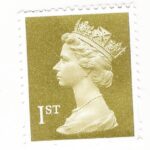The Registers of Scotland is the government agency in charge of keeping track of property titles in Scotland. This system existed for quite some time, initially created by King James VI of Scotland in the early 17th century. It has improved over time. Now the people of Scotland benefit from a cutting-edge, highly functional system that delivers a broad variety of services. In this article, you’ll learn everything about the Scottish land register system. It will also include its origins, its development, and the registers of Scotland’s function as its administrator.
An Overview of the Scottish Property Records System
King James VI of Scotland assumed power in 1567, marking the beginning of a new era in Scotland’s land record system. Moreover, the title to the land is unclear or in question, leading to a number of conflicts and disagreements. King James VI of Scotland recognized the problem in 1617. He ordered the creation of Scotland’s first national land record. Registration processes employed a sasine method termed called the General Register of Sasines. The act of physically giving over a parcel of land or other property to another in the presence of witnesses. Called a sasine and represented a symbolic transfer of ownership.
Furthermore, being the country’s first land register, the General Register of Sasines was essential in shaping subsequent land registration practices in Scotland. However, it depends on a paper-based registration system. The system was not without flaws and frequently proved sluggish and inefficient. As time went on, it became obvious that a new, more up-to-date system is a requirement.
A Look at Scotland’s Up-to-Date Land Register
Beginning in the latter part of the twentieth century, the Scottish government set out to completely revamp the country’s land registers of Scotland system. The purpose of the change was to update and streamline the system. Why? So that it could better serve the people of Scotland.
Based on a digital land registration system, the new system was developed to be more effective and user-friendly than the previous paper-based approach. As an added bonus, the new mechanism should make land transactions more transparent and less prone to fraud.
The current land register system in Scotland is characterized by the following features:
a. Scottish Property Records
Land ownership in Scotland is recorded in a public database called the Land Registers of Scotland. Any property and real estate in Scotland that has been formally registered will have its owner, property description, and registered legal rights included in this register.
A reliable and current record of land ownership, the Land Register of Scotland is an essential resource for anybody interested in purchasing, selling, or managing real estate in Scotland. Also, the registry facilitates swift and accurate completion of land and property transactions by making all relevant data readily available.
b. Sasine Registry, Official Record
Property ownership in Scotland may trace back through the ages in the Sasine Record. The first entries in the General Register of Sasines document land transactions that occurred in 1617. Moreover, several sorts of transactions are still recorded in the Sasine Register today.
c. Instances of the Electronic Land Registry
Scotland’s current land register system or the Digital Land Register. It is an electronic registry of all conveyances of real estate in Scotland, such as sales, mortgages, and leases. Anybody who wants access to information on land ownership in Scotland may do so. How? Via the digital land register, the principal registration for all land and property in Scotland.
The Digital Land Registry is a reliable and comprehensive system that benefits all Scots. Further, users may do land-based searches and get access to related data using this system. Maps and plans of land and property, as well as data on the Scottish real estate market, are only a few of the other services made available by the system.
Scots Land Registry and the Function of Registers of Scotland
The Scottish land registration administers the registers of Scotland. According to the Land Registration (Scotland) Act 2012, this body performs its duties as an executive agency of the Scottish Government.
Registers of Scotland’s primary responsibility is to improve and expand the country’s land registration system. This involves doing things like helping Scots in need, using innovative tools to streamline land registration, and giving individuals sound guidance on land and property ownership.
Additionally, the registers of Scotland also offer a number of supplementary services. These include data on land and property ownership, land and property maps and plans, and statistics on the Scottish real estate market.
Conclusion
There wouldn’t be a land register system in Scotland without Registers of Scotland. The institution has a rich and interesting past, and it has developed into a cutting-edge system that serves the people of Scotland in many different ways. Registers of Scotland’s services, such as the online portal and the Land Register of Scotland, have improved the accessibility, efficiency, and transparency of the Scottish land register system.
Everyone involved in the purchase, sale, or ownership of real estate in Scotland must use the Scottish land register system. It helps expedite the buying and selling of land and other properties. It does this by maintaining a precise record of ownership. Registers of Scotland have been crucial in the growth of Scotland’s land register system. Further, It will remain so going forward.





No Comment! Be the first one.